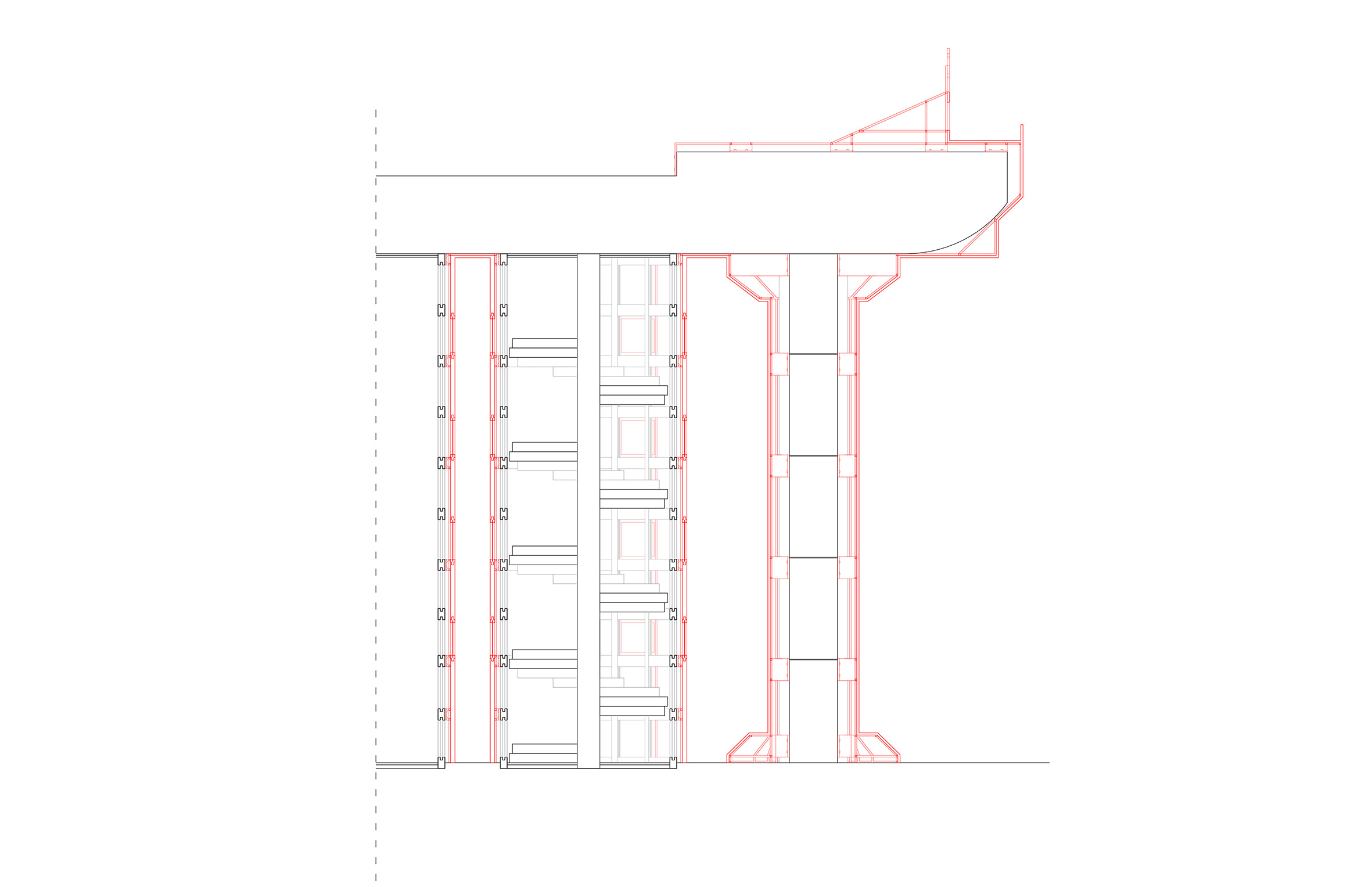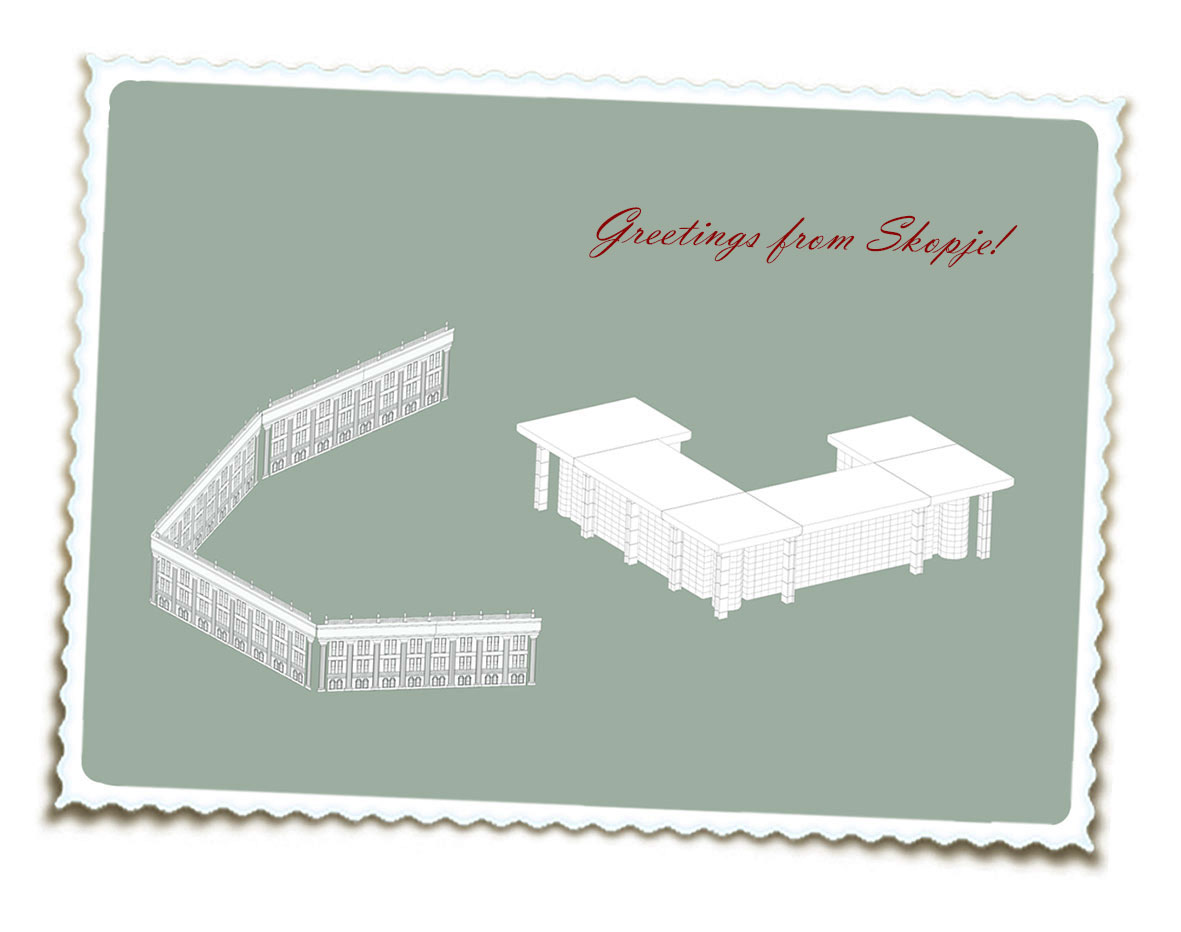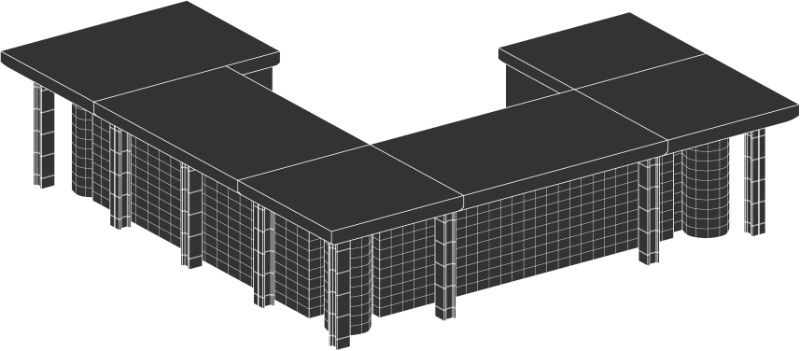Former Republic TC Dispatch Center
Zoran Shtaklev
1989
Facade Reconstruction (ongoing)
unannounced author
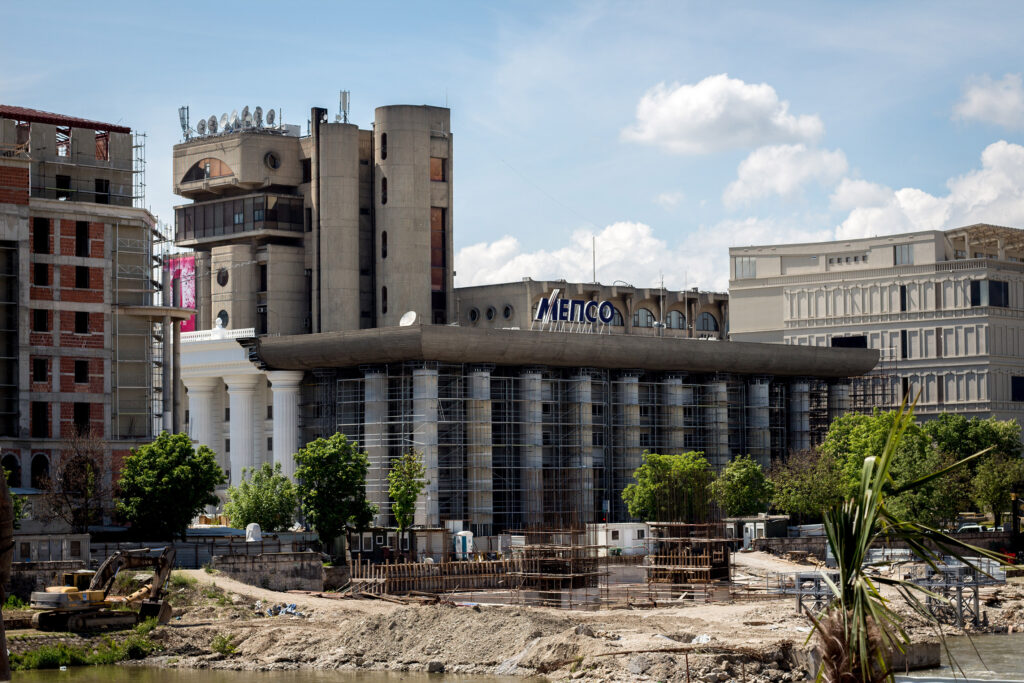
MEPSO, 2015, Photos by Darmon Richter ©
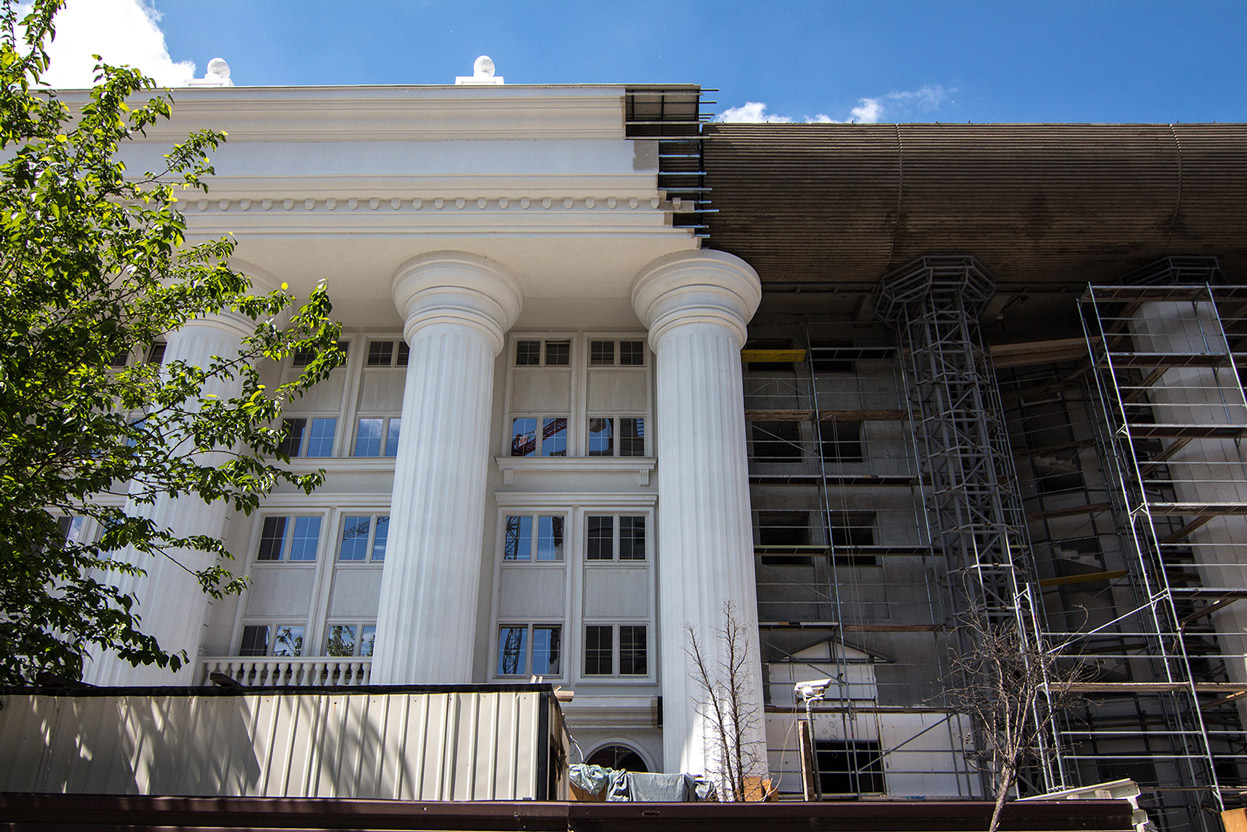

The MEPSO building was originally built as the Republic Dispatch TC Center, in 1989 by architect Zoran Shtaklev. It is an example of an already exiting urban artefact modified by the Skopje2014 project.
It’s one of the latest samples of architecture from the third modernization period of Skopje, the post-earthquake renewal of the ‘city of solidarity’, built only two years before Macedonia splits from the Yugoslav Union and proclaims independence.
With its materiality and style it communicates with the building next to it – the Telecommunications Center from 1974 by architect Janko Konstantinov.
It has two contrasting features, i.e. the volume which contains the program and is completely wrapped with a glass facade with an orthogonal clear grid and a beton brut heavy-looking cover on top of it with is carried by massive columns that are independent from the glass segment. At each of the three edges oriented towards the outside of the block, there is an expressive glass cylinder which contains the vertical communications.
In its volume, the MEPSO building follows symmetry and order, executed with current materials, technologies and expressions that reflect modern times.
At the moment there is an ongoing renovation of this building’s facade. The building is being redressed to look much older in an invented architectural language. Only the building’s exterior is being changed.
If one for a moment neglects the reasons for reflecting historical styles, the comparison between the old and the new appearance of the building is an interesting one, as they are both hinting some history, but using a very different approach. The original approach of the building, while following classical priciples such as symmetry, is also complements its context and is current in its materials and techniques. The approach of Skopje2014 on the other hand is completely denying and neglecting the building’s context, both physical and historical. The author of the facade renovation is unannounced.
Another effect from the Skopje2014 is hiding and disconnecting of the MEPSO building from the city square. The Skopje2014 project is placing new architecture in front of the MEPSO building, on an area that used to be a public park which connected the city square and this building. In its size and silhouette, this new architecture completely erases the MEPSO building from sight, when one is on the main square.
One can summarize that the MEPSO building is an urban artefact from the last pre-independence, modernistic production that is currently being reinvented into a building whose original interior and newly added exterior do not speak the same architectural language. Same as the other refacaded examples, the background of this change is not material maintenance, but ideology.
